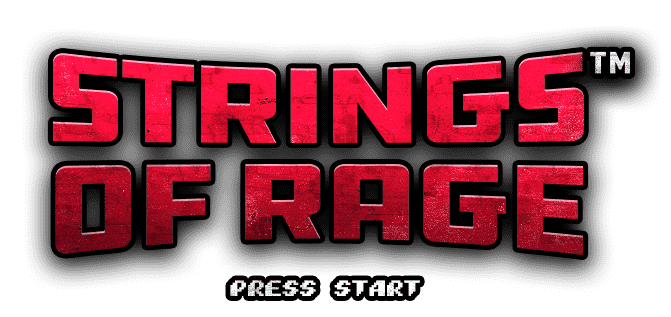In this episode we’re going to take a detailed look at intervals, what they are and the sound quality of each interval type. An understanding of intervals is absolutely essential to avoid the guesswork when navigating the guitar neck not just with lead lines but creative chord voicings too.
Let’s understand the intervals for guitar. The most underestimated weapon in your arsenal of musical weaponry. Essentially intervals are simply the distance between notes, however with a little understanding you can harness the true power of intervals to achieve any sound you want. We’ll also learn about interval note quality and how this can help unlock songwriting creativity.
Intervals for Guitar: The Basics
Intervals are the distance between any two notes at a given time. You could say they really are the building blocks of all music, they make up every musical scale which in turn build chords. With your chords you can then write songs. If you can really truly master the intervals for guitar then understanding anything that follows will be made vastly easier.

Knowing intervals doesn’t just help you to understand scales. If you know the sonic quality of note intervals you can then use this knowledge to be more creative with your song writing, chord progressions and riffs.
Intervals On The Fretboard
We’ve shown every single type of interval across the neck from open string to fret 12. Since the fretboard repeats beyond that you can easily find your intervals in the upper range of the guitar. Let’s get into these intervals!
The Half Step – AKA Semitone
Interval: Half Step (Semitone)
Typical Sonic Quality: Dark, Evil, Metal, Dissonance
The half step is simply 1 note to the next adjacent note in either direction. Most commonly the half step would be played like this (with any finger combination) It’s really important to think beyond playing the intervals on the same string.
For example, playing this interval from fret 5 low E string and then jumping to the b2 on the A string is an unusual way to do it but with the right lick or musical idea it might make complete sense to play it this way. Ultimately you should use your knowledge of intervals to navigate the fretboard and set up your licks and ideas in way that makes sense.
The Whole Step – AKA Tone (or Whole Tone)
Interval: Whole Step (or Whole Tone)
Typical Sonic Quality: Bright, Happy, Melodious, can also evoke Mystery
The whole step is simply a gap of 1 fret between two notes, e.g fret 10 to fret 12 on the same string. Typically this has a bright and happy sound, however if you know the whole tone scale you’ll know that a simple interval can quickly become a mysterious sound that excites your listener.
The Minor Third
Interval: Minor Third
Typical Sonic Quality: Bright, Bluesy, Scary, Mystery, Woe
As we start getting into wider intervals you’ll quickly notice that the sound quality often depends on the note(s) that come after. For example, the minor third interval can make up the first notes of a blues scale or it can equally become the first notes of a diminished arpeggio. These two forms have drastically differing sound qualities. Knowing what these intervals can lend themselves to will help you unlock interesting ideas through creative note choices.
The Major Third
Interval: Major Third
Typical Sonic Quality: Bright, Mysterious, Unnerving, Uncertainty
As you’ve probably guessed, the major third comes next! Much like the minor third, this major third interval can lend itself to both bright and beautiful arpeggios as well as the trippy augmented sound. Again, similar to the minor third, two major thirds yield an augmented arpeggio (or chord) All the intervals up to this point have musical qualities that define different types of sounds. Let’s now look at the next two type of interval which are much more ‘neutral’ in their sound.
The ‘Perfect’ Fourth
Interval: Perfect Fourth
Typical Sonic Quality: Neutral, Metal, Heavy
The perfect fourth is one of two ‘neutral’ sounding intervals. You can think of these as ‘safe’ sounds. When you’re creating lead melodies, arpeggios or even chords, generally speaking it’s the third’s, sixths and seventh intervals that define the musical quality of the sound. For example you could write a lead melody just using these intervals and if it became too weird or jarring you know that a fourth or fifth interval brings the listener back to a more familiar place. Check out this video where Guthrie Govan demonstrates this using the dorian mode as an example.
Power Chord Alternative: It’s worth mentioning that the perfect fourth when used as a ‘power chord’ makes a good and more aggressive sounding alternative to the more common 5th power chord that everyone knows and plays. This fourth interval power chord is used extensively by Metallica.
The ‘Perfect’ Fifth
Interval: Perfect Fifth
Typical Sonic Quality: Neutral, Metal, Heavy
The perfect fifth is the second of the two ‘neutral’ sounding intervals. There isn’t a guitar player on this earth that hasn’t or doesn’t use the power chord in some way shape or form. It’s the most easy and common basic chord that everyone is shown or learns as a new player. You can move this power chord around wherever you like and quite happily metal riff your ass off all day long. Simply because you’re not using any expressive intervals you can create anything you want. No rules here! If you’re creative enough to to explore it enough you can get some really intervallic sounds by mixing 4ths and 5ths.
The Flat Fifth (b5) AKA Diminished Fifth or Sharp Fourth (#4)
Interval: Flat Fifth
Typical Sonic Quality: Dissonance, Mystery, Intrigue, Insecurity
The flat 5 can be classified in a few different ways and has a few different possibilities for function depending on how it’s used. For example, it can yield a very majestic sound if it’s used as a #4 from the lydian mode. In which case you could harmonise a variety of chords that use this interval.
On the flip side to this you can find this interval within the Dominant 7b5 arpeggio which can be found within melodic minor – this is a much more dissonant sound. It’s all about the context in which the interval is used and the other notes it is combined with.
The Minor Sixth
Interval: Minor Sixth
Typical Sonic Quality: Dissonant, Metal, Heavy, Fear, Dread
The minor sixth intervals starts dipping back into the dissonant sounds you’d expect from a minor interval. The minor 6th ‘power chord’ has a very jarring sound so use it sparingly. Consider using a minor 6th interval for single note riff ideas as opposed to chordally.
The Major Sixth
Interval: Major Sixth
Typical Sonic Quality: Dissonant, Metal, Heavy,
Despite being a major interval this still has a relatively dark sound. For example used as a part of the ionian#5 scale (mode 3 of harmonic minor) will yield a dark and exotic feel. Again this is all about context, in the ionian or lydian modes the major 6th will appear bright and melodious but in the ionian#5 mode it’s a different feel altogether.
The Minor Seventh
Interval: Minor Seventh
Typical Sonic Quality: Dissonant, Metal, Heavy, Outside, Unusual
This interval is an interesting one. Regardless of the style you play, used correctly in a phrase, lick or melody this could yield an outside sound that really surprises your listeners.
The Major Seventh
Interval: Major Seventh
Typical Sonic Quality: Dissonant, Metal, Heavy, Outside, Unusual
This interval is another interesting one. Despite being a major interval it has a much more sinister sound. This is because it’s the last interval before the octave and therefore has a desire to resolve.
The Octave
Interval: Octave
Typical Sonic Quality: Safe, Neutral
The octave is simple the same note at a different position on the fretboard at a different pitch. Using octaves is a common way of playing and you’ll hear it across many different styles from bebop to metal. In order to play both notes at once you’ll need to learn to mute the string between the two notes with your fretboard hand. This takes patience but once you’ve got it down it’s a great addition to your bag of tricks.
Closing Thoughts
We hope you’ve enjoyed this lesson and that it’s been helpful in some way. Knowing the intervals for guitar will help you become a more informed player that can make better note choices with lead lines and create interesting chord voicings without too much trouble.
Footnote: We’re massive fans of Jack Gardiner and his lesson on intervals is killer.










1 Comment
[…] Intervals […]